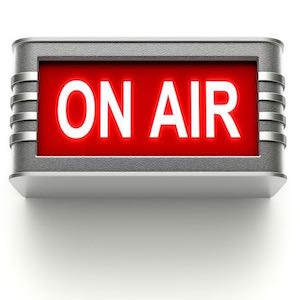By Dr. Ken Broda Bahm:

Attorney: “To help prepare you for your testimony, let’s review what they’re going to ask about. They’re going to ask about Smith’s performance reviews.”
Witness: “Okay, I can talk about these…”
Attorney: “Great, so…Why would you terminate Smith after rating him excellent just three weeks earlier?”
Witness: “Well, I think you know why… Oh, is that the question? Okay, then, I’d say… Mr. Smith was terminated for knowingly violating a company policy.”
Attorney: “Now, why do you say, ‘knowingly?’ That isn’t in your term letter, and we actually don’t know what he knew. Isn’t it more about the nature of the violation?”
Witness: “Would they ask me that question? Oh, that’s your question. Okay, right, Mr. Smith was terminated for a serious policy violation.”
Attorney: “And it was really a bunch of violations, wasn’t it?”
Witness: “That’s right, the guy was a walking disaster.”
Attorney: “You wouldn’t say that would you?”
Witness: “Of course not, I thought we were just talking…”
Attorney: “No, no, we’re practicing.”
I’ve seen scenarios like that play out in witness meetings when it isn’t clear whether the attorney is discussing the testimony or engaging in a mock cross-examination. Some trial lawyers will consciously move back and forth between advice and practice, sometimes punctuating their advice by asking a question. The reason for that is to get the witness to appreciate the risks, but it can be disorienting. When I am participating in witness-preparation meetings, something I do two or three times a week, I will encourage a clear separation between the two phases: We will discuss, and then we will practice, but in order to avoid confusion and some bad habits, we will always make it clear which we are doing.
Draw a Sharp Distinction
In order to be prepared and to feel prepared, witnesses need time in the hotseat. But they also need feedback. In any preparation session, you will do both. But it helps to separate those phases. In a deposition, you have a court reporter and potentially a videographer there to make clear whether we are on the record or not. It helps to do the same thing during a preparation session. For example, I will usually video-record witness practice. In addition to helping the witnesses see how they come across, and providing a record of answers we can talk about, the camera also helps to reinforce that distinction: If we are practicing, then we are recording, and if we are discussing, then we are not recording. I’ll usually say, “We’re on the record” when I start the recording.
Address the Tough Stuff Before You Practice
Before you engage in any mock testimony with a witness, it is necessary that you have discussed the key substantive areas of testimony first. Practice is not the time to be working out your best litigation posture. And, there is the added risk, that in a practice session, a witness who hasn’t resolved the substance of the case will end up giving and reinforcing an answer that isn’t accurate or doesn’t help their case. In discussing the substance, it isn’t a matter of “woodshedding” or telling the witness what to say, it is a matter of asking questions and providing feedback so that a witness has, as I’ve termed it in other posts, “the Best Answer the Facts Allow.” Once you’re agreed on that, the ‘BAFA’ on each critical issue, then it is time to put it into practice through simulated testimony.
Practice, Discuss, Practice Again
When you are conducting your mock-testimony session, it helps to provide the witness with sustained opportunities for feedback. Jumping in to comment after each answer can leave a witness less confident, as though they want to hear what you think before they answer. Instead, a witness needs to feel self-sufficient. All told, it is better to have a confident witness with 95 percent good answers than to have an uncertain or unconfident witness with 100 percent good answers. Confidence is a big part of what jurors and judges will be looking at. At the beginning of the practice, aim toward segments of five minutes or so, followed by feedback off the record. As the witness gets more comfortable, you can follow up with longer and longer segments.
For Trial, Practice Both Direct and Cross
In a deposition, it is typically just the other side asking questions. But in trial, the witness should be prepared for, and should practice both styles of questioning. The real threat, naturally, is cross-examination, but direct can be tricky too, as the attorney and the witness need to be seamlessly on the same page about what gets covered and when. The attorney’s inability to ask leading questions means that greater responsibility is on the witness, and practice helps to get both comfortably on the same page.
For testimony, that is especially critical or challenging. The gold standard is probably to conduct a full mock examination as a true ‘final exam,’ with no stops and with feedback delivered only at the end. That isn’t always necessary, but when it is, it helps the witness to feel completely ready for the testimony as it will occur.
_____
Other Posts on Witness Preparation:
- Witness Testimony: Understand the Confidence/Competence Circle
- Prep with Purpose: Six Best Practices for Witness Meetings
- Trial Witnesses, Un-Lead the Questions